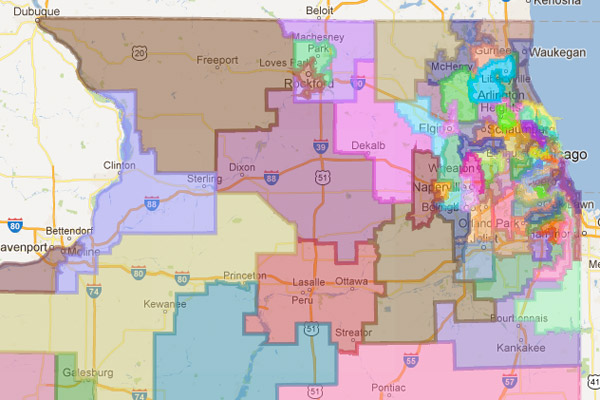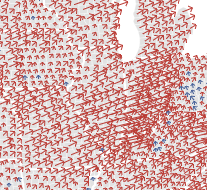
Talk about a political prediction: this is from an analysis of Illinois's most recent redistricting, from DailyKos in 2011:
The real action is in the suburbs, where the 10th is up about 2% [in percentage of 2008 vote to Obama], which should be enough to topple Bob Dold!
[snip]
Speaking of scraping by, Quinn also eked out a win in the new 10th (showing the effects of the precinct swapping in Cook County), 46.7 to 46.1; this gives me particular confidence for knocking off Dold. Brady narrowly beat Quinn in the new suburban 8th (48-44) and 11th (47-45) as well, but its hard to understate how much difficulty Quinn had in the suburbs. (You try campaigning on an income tax increase.) Both seats should go Dem with a competent Dem candidate.
Sure enough, a competent Dem (Schneider) beat a competent Republican (Dold) in the 10th; a competent Dem (Duckworth) beat an utterly incompetent Republican in the 8th (Walsh); and a competent Dem (Bill Foster) beat a competent Republican (Judy Biggert) in the 11th. It's a gut analysis, but an impressive one. Put simply, the Democrat-led redistricting worked very well. Most of Illinois (including Cook County) voted more Republican on the presidential level in 2012, as you can see from this highlight of an excellent NYT interactive map:

* Cook County went from 76.2 percent for Obama to 74 percent for Obama.
* Will, 55.9 to 51.1
* DuPage, 54.7 to 49.7
* Lake, 59.1 to 53.4
* Kane, 55.2 to 49.6
* McHenry, 51.8 to 44.7
And so forth. Of those, Obama only lost McHenry, but his coattails were shorter this time, not to mention the fact that Democrats "are just worse at gerrymandering when they get the chance." So it's impressive that the party pulled it off:
Northern Illinois University political science professor Matt Streb said the big win for Democrats was partly because redistricting by Madigan and other party bosses shifted Republican voting blocs around to improve Democrats’ chances of winning more seats in the legislature.
“Maybe you take some of the Republicans, and you put them into [Congressman] Mike Quigley’s 5th District. That was actually where [Congresswoman] Judy Biggert’s old home was in Hinsdale. Well, that’s now part of Quigley’s 5th District,” Streb said. “So instead of winning with 68 percent of the vote, maybe Quigley wins with 63 percent of the vote, but he still wins very easily.”
(Quigley picked up 65 percent of the vote.)
Citizens concerned about the vagaries of redistricting might have some interest in an idea floated by Republican state rep Mike Fortner, which would likely appeal to Chicago's active and activist open-data community:
He calls it the “competition model,” as opposed to the independent-commission model most often discussed as an alternative to the current redistricting process, which is often criticized for protecting incumbents and the interests of political parties.
“The Founding Fathers would have wanted highly competitive districts, to see legislatures change with the whims of the public,” Fortner says. “Unfortunately, we’ve gone away from that.”
He particularly likes the “competition model” because people, not computers, draw the maps — thus allowing for electoral data, political considerations and legal concerns to be taken into account. Computers are simply used to evaluate the people-drawn maps.
But how do you do indie redisticting? There's an app for that.


